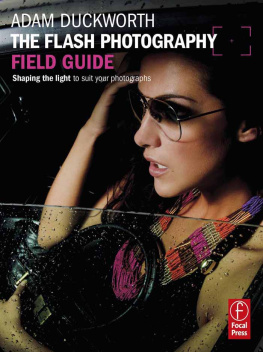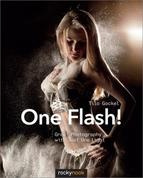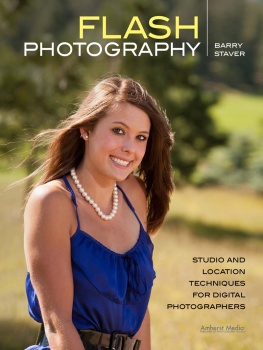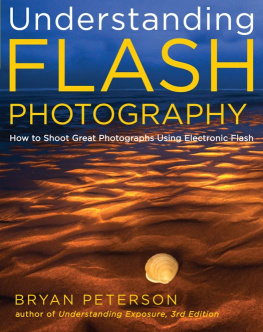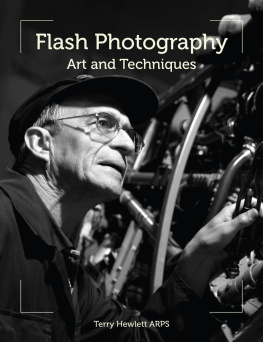NK Guy - Mastering Canon EOS Flash Photography
Here you can read online NK Guy - Mastering Canon EOS Flash Photography full text of the book (entire story) in english for free. Download pdf and epub, get meaning, cover and reviews about this ebook. year: 2010, publisher: rockynook, genre: Children. Description of the work, (preface) as well as reviews are available. Best literature library LitArk.com created for fans of good reading and offers a wide selection of genres:
Romance novel
Science fiction
Adventure
Detective
Science
History
Home and family
Prose
Art
Politics
Computer
Non-fiction
Religion
Business
Children
Humor
Choose a favorite category and find really read worthwhile books. Enjoy immersion in the world of imagination, feel the emotions of the characters or learn something new for yourself, make an fascinating discovery.

- Book:Mastering Canon EOS Flash Photography
- Author:
- Publisher:rockynook
- Genre:
- Year:2010
- Rating:5 / 5
- Favourites:Add to favourites
- Your mark:
- 100
- 1
- 2
- 3
- 4
- 5
Mastering Canon EOS Flash Photography: summary, description and annotation
We offer to read an annotation, description, summary or preface (depends on what the author of the book "Mastering Canon EOS Flash Photography" wrote himself). If you haven't found the necessary information about the book — write in the comments, we will try to find it.
NK Guy: author's other books
Who wrote Mastering Canon EOS Flash Photography? Find out the surname, the name of the author of the book and a list of all author's works by series.
Mastering Canon EOS Flash Photography — read online for free the complete book (whole text) full work
Below is the text of the book, divided by pages. System saving the place of the last page read, allows you to conveniently read the book "Mastering Canon EOS Flash Photography" online for free, without having to search again every time where you left off. Put a bookmark, and you can go to the page where you finished reading at any time.
Font size:
Interval:
Bookmark:
Copyright 2010
NK Guy, photonotes.org
Editor: Gerhard Rossbach
Production Editor: Joan Dixon
Copyeditor: Lisa Danhi
Layout and type: Petra Strauch, just-in-print@gmx.de
Cover design: Helmut Kraus, www.exclam.de
Cover photos: NK Guy
Printer: Tara TPS, Ltd., through Four Colour Print Group, Louisville, Kentucky
Printed in Korea
1st Edition (First reprint, June 2010)
Rocky Nook, Inc.
26 West Mission Street, Ste 3
Santa Barbara
CA 93111-2432
www.rockynook.com
Library of Congress Cataloging-in-Publication Data
Guy, NK.
Mastering Canon EOS flash photography/NK Guy. -- 1st ed.
p. cm.
ISBN 978-1-933952-44-4 (alk. paper)
1. Electronic flash photography. 2. Canon camera. I. Title.
TR606.G89 2009
778.72--dc22
2009043427
Distributed by OReilly Media
1005 Gravenstein Highway North
Sebastopol, CA 95472
All product names and services identified throughout this book are trademarks or registered trademarks of their respective companies. They are used throughout this book in editorial fashion only. No such uses, or the use of any trade name, are intended to convey endorsement or other affiliation with the book. No part of the material protected by this copyright notice may be reproduced or utilized in any form, electronic or mechanical, including photocopying, recording, or by any information storage and retrieval system, without written permission of the copyright owner. While reasonable care has been exercised in the preparation of this book, the publisher and authors assume no responsibility for errors or omissions, or for damages resulting from the use of the information contained herein.
All photographs and illustrations by the author.
This book is printed on acid-free paper.

For Dad. Who taught me that to find a photograph, youve sometimes got to wait.
Twenty-five years ago, when I first became a professional photographer, I scraped together $650 (which went much further than it would today) and bought a specialized Polaroid back for my Nikon. It was ridiculously expensive, but it did one thing very well. For just two dollars and a two-minute wait, I could see a tiny, near-instant photograph from my 35mm camera.
And I did it for one reason: to help me improve my flash photography.
The device was painfully expensive to buy and to use, but it was worth every penny. I finally had the instant feedback I needed to adjust my lighting on the fly. I could see what I was doing wrong and fix it immediately. Or, more often, see that my lighting was too boring and kick it up a notch.
Fast forward to 2009, and everyone has Polaroid backs, disguised as small screens, on the backs of their cameras. Instead of two minutes and two dollars, the result of your just-taken photo is displayed instantly, and for free.
Combine that with the availability of small, powerful and sophisticated flashes, and the result is literally hundreds of thousands of new photographers around the world experimenting with light in new and interesting ways.
But even though we have the feedback from the screen, flash is intimidating for many of us. The process is somehow mystical in that it happens all at once, which makes it harder to understand than a continuous light source.
Though it can be a bit of a hurdle to overcome, learning how to use your flashboth on-camera and offis worth the effort. Photographers write with light, and there is no small light more versatile and/or more powerful than the small flash built for your DSLR.
When we shoot with the flash on the camera, we see the world as if we are walking around with the sun behind us. Sure, the detail is recorded, but all three-dimensionality is lost. It is as if we are taking pictures of our world with a photocopier.
But move the lights away from the camera, and shape is revealed. That difference between what the camera sees and what the light sees creates form, texture, mood, and feeling.
Light is the single most important element that determines the feel of a photograph. And yet so many of us are held captive to whatever available light is provided. Taking the leap to learn how to control your own lighting opens the door to a completely new world of photography. Your visionyour creativitybecomes limitless. You can create any look you want.
And all of the magic happens in less than a 1/1000 of a second. All you have to do is understand the principles well enough to start to experiment and play.
If you were a painter, you would take the time to learn about paint: how to color it, how to mix it, how to apply it, and how to shape it.
You are a photographer. Make the same commitment to learn those things about light.
David Hobby
Strobist.com
Columbia, MD, USA
August 2009
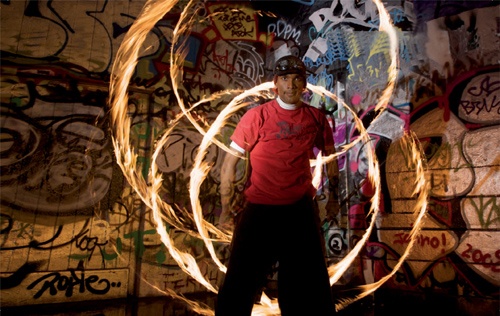
The invention of electronic flash, and its subsequent miniaturization and automation, completely transformed photography. The earliest photographers were constrained by the availability of sunlight, but today reliable and portable light sources are at every photographers disposal.
Electronic flash was first used in the 1930s as a tool for freezing motion and illuminating dark scenes with artificial light, but flash is now used for all types of photography, creative and mundane. Its uses range from supplementing daylight to designing complex scenes lit by multiple light sources.
But flash photography is also a difficult artistic and technical challenge. When most people hear the word flash, they think of harshly lit snapshots: friends in a dark cavern of a restaurant or living room, staring into the lens like deer in the headlights. This represents the typical experience of flash photographybut it doesnt have to be that way.
So the basic question is, how to go from this...
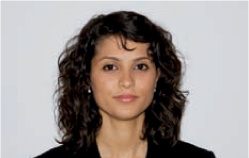
to this?

Both photos were taken with the same camera, the same lens, the same lens focal length, and the same model. Everything was identicalexcept that the first photo was taken using the cameras built-in flash, whereas the second photo was taken using a two-light studio setup.
This book will help you master the use of flash, covering everything from Canons Speedlite flash system to off-camera portable flash and professional studio lighting. It begins with the fundamentals of flash metering technology, discusses key concepts, documents the various features and functions available with EOS equipment, explores flash accessories and studio equipment, and concludes with a review of basic lighting techniques. Much of this material is relevant to users of any camera system, but most of the details of automated flash (TTL and E-TTL) are specific to Canon EOS.
It also covers the exploding field of off-camera flash, whether through portable battery units or traditional studio lighting. This is an area traditionally seen as too daunting for all but professional photographers, but the combination of digitals immediacy and ease of use, and popular websites such as Strobist.com, have brought off-camera flash to a whole new audience.
Font size:
Interval:
Bookmark:
Similar books «Mastering Canon EOS Flash Photography»
Look at similar books to Mastering Canon EOS Flash Photography. We have selected literature similar in name and meaning in the hope of providing readers with more options to find new, interesting, not yet read works.
Discussion, reviews of the book Mastering Canon EOS Flash Photography and just readers' own opinions. Leave your comments, write what you think about the work, its meaning or the main characters. Specify what exactly you liked and what you didn't like, and why you think so.

